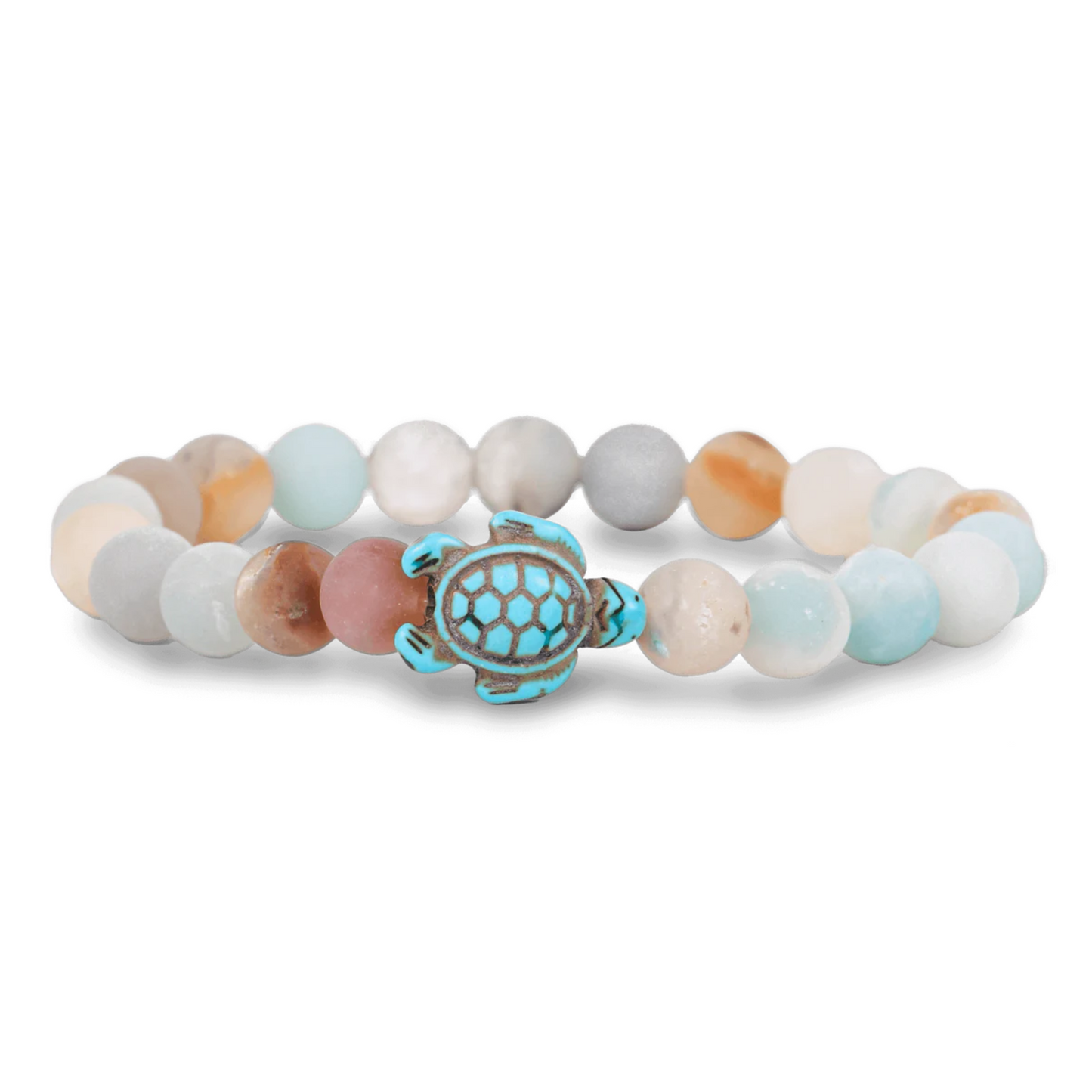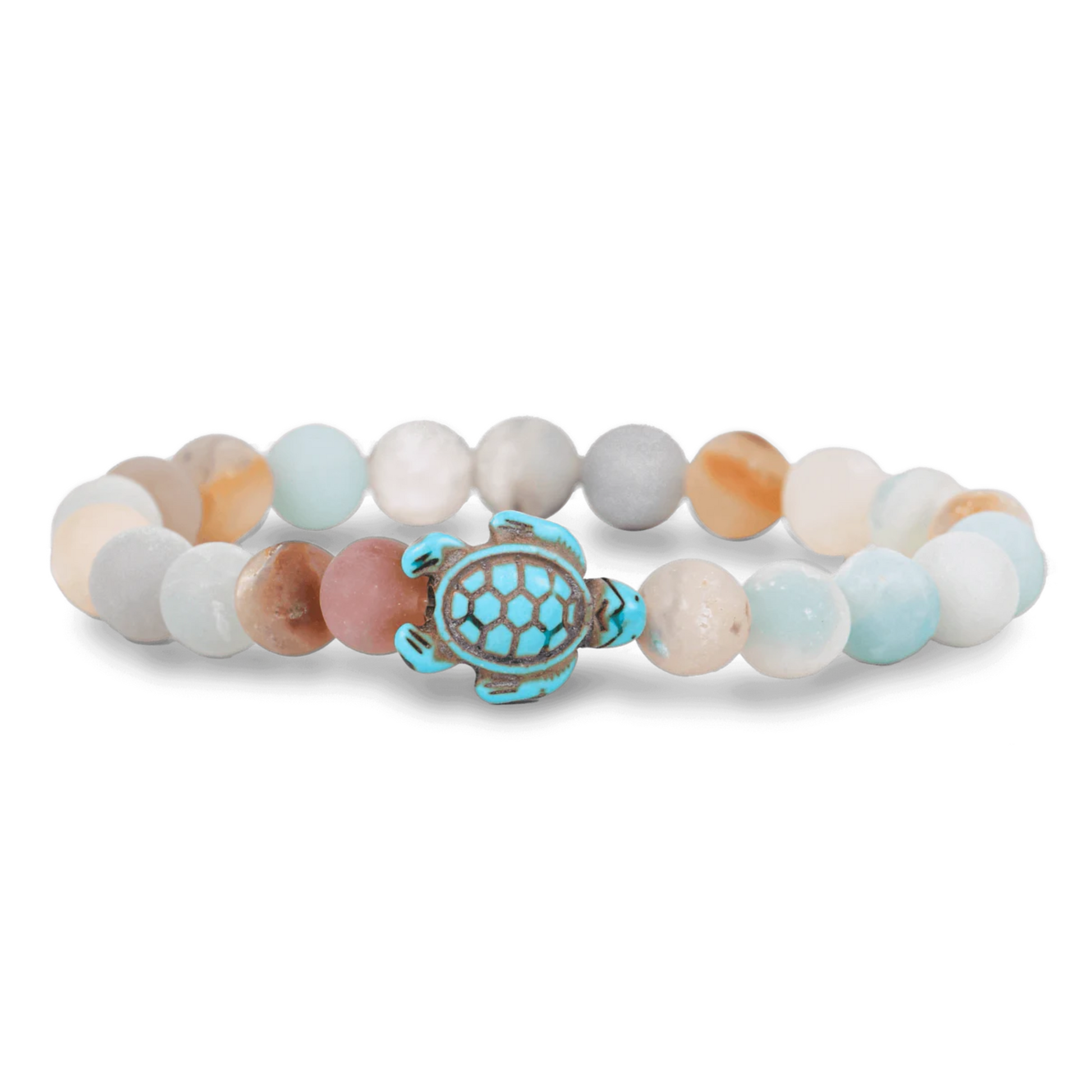Fahlo
Animal Tracking Bracelet - Journey Sea Turtle - Sky Stone
Animal Tracking Bracelet - Journey Sea Turtle - Sky Stone
Couldn't load pickup availability
Created in partnership with the Sea Turtle Conservancy, each Journey Bracelet unlocks an interactive tracking map and directly supports sea turtle conservation. A portion of the proceeds are donated to the Sea Turtle Conservancy, who helps raise awareness and provide protection for sea turtles around the globe.
Meet your sea turtle and learn their story. Reveal exclusive photos, stats, and updates along the way. Follow their path on an interactive tracking map.
- Brand: Fahlo
- Stone: Sky Stone
- Each order supports the Sea Turtle Conservancy
- Sizing: Elastic, one size fits most
- QR code provided to unlock interactive map - compatible on smart phones only.
How does tracking work?
- Tracked via SPOT (Smart Position and Temperature) tag
- This animal’s safety guarded with the Fahlo Protection Ping™
Every Fahlo tracking experience includes the Fahlo Protection Ping™. This indicates each animal’s unique path may be live, delayed, or historical based on required safety protocol in accordance with our nonprofit partners.
While the experience of following an animal’s journey remains the same for you, we work behind the scenes with our partners to ensure this experience is presented in a way that keeps the animals safe, one step or splash at a time.
Why are sea turtles tracked?
Since most research conducted on marine turtles has been carried out on nesting beaches and well over 90% of a sea turtle’s life is spent in the water—feeding, mating, migrating and doing whatever else a sea turtle does when no one is watching, we are missing important information that can help us better protect sea turtles. In particular, to adequately protect sea turtles in all their habitats, we must learn more about their migratory patterns, their behavior at sea, where their marine habitats are located, how the turtles use these different habitats, and the migration routes turtles travel between habitats. Satellite telemetry (following an object on the earth with the use of orbiting satellites) has advanced to the stage of allowing researchers to track turtles in the open ocean after attaching a Platform Terminal Transmitter (PTT) to the back of a sea turtle. – Sea Turtle Conservancy
How are sea turtles tracked?
There are currently three common methods to attach a transmitter to a sea turtle. Two methods are for all sea turtles, except leatherbacks. The first of these methods uses fiberglass and resin to create a hard cover that goes over the transmitter and attaches to the shell. The second method uses a non-heat epoxy to “glue” the bottom of the transmitter to the turtle’s shell. Because of their unique shell, neither of these methods can be used for a leatherback. Instead, the transmitter is attached directly through the dorsal ridge. – Sea Turtle Conservancy
Does tracking harm the sea turtles?
Proper attachment methods are designed not to harm the sea turtle, damage its shell or increase the turtle’s chances of being tangled. While researchers continue to modify and develop new techniques to reduce any impacts to sea turtles, having a transmitter attached does create some additional drag while the turtle is swimming. Researchers have recorded females returning to successfully nest after having a transmitter attached, which suggests that having a transmitter does not impact a sea turtle’s migration, feeding and mating behavior. – Sea Turtle Conservancy
For more information, visit conserveturtles.org


